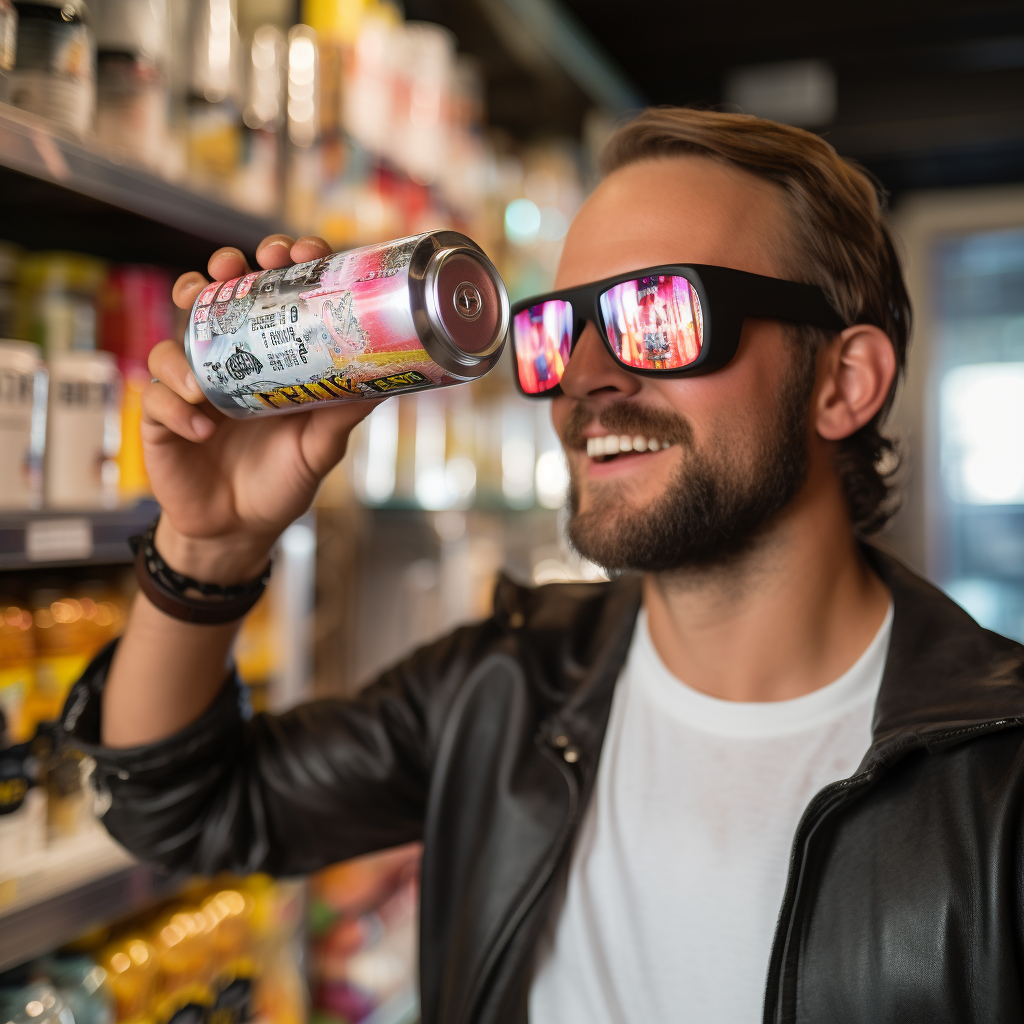Imagine the following:
It’s 2026, and you and your friends are taking a trip to a local brewery. You have your special augmented reality glasses on, head inside, and go right on over to the bar. In front of you is a display of the current beers for sale, being showcased by the bottles and cans they come in. You are absolutely enthralled with excitement for the experience you are about to have- and it’s not because of the beer- but the label.
Now, why would you be so excited about seeing a label?
It’s because the brewery has implemented Augmented Reality into their labels, and now each beer can and bottle you look at gives you a specific visual experience.
Here is what it could look like:



Images were generated through Midjourney, an AI image generator.
Now, of course the images above are conceptual. But think about the possibilities that lie ahead with this piece of technology.
Augmented Reality adds digital layers to physical labels, providing an enhanced view of products and additional interactive content. By scanning a labeled product with a smartphone or AR-enabled device, like glasses, consumers can unlock a world of information and engagement. Here's how AR transforms the customer experience:
- Interactive Product Visualization: AR allows customers to visualize products in real-world settings before making a purchase. By overlaying digital content onto labels, customers can use their devices to see how a piece of furniture might look in their living room or how a cosmetic product might appear on their face. This interactive visualization helps customers make more informed decisions and reduces the chances of buyer's remorse.
- Engaging Storytelling: AR on labels enables brands to tell captivating stories and create immersive experiences. Through animated visuals, videos, or virtual tours, brands can communicate their values, brand history, or sustainability initiatives. This interactive storytelling approach deepens brand connections and fosters emotional engagement with customers.
- Personalized Product Information: AR-powered labels provide customers with personalized information about products. By scanning the label, customers can access detailed specifications, usage instructions, customer reviews, and even personalized recommendations based on their preferences. This personalized information empowers customers, enhances transparency, and helps them make well-informed purchasing decisions.
As technology continues to advance, the integration of Augmented Reality in label design opens up a world of possibilities for transforming customer experiences. AR-powered labels create interactive and immersive encounters that captivate customers, foster brand loyalty, and drive sales. By embracing this innovative technology, brands can stand out in a competitive marketplace, deliver personalized and engaging content, and enhance the overall customer journey. Get ready to embark on a new era of customer experience as AR reshapes the way we interact with labels and products.

